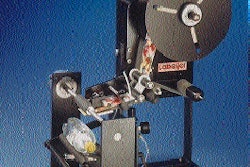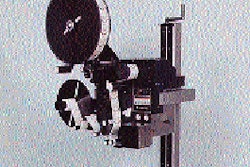
For instance, the environment's influence on packaging development is diminishing. As we approach the 25th anniversary of Earth Day later this month (April 22), we have a better understanding of packaging's (insignificant) detrimental impact on the environment vs. its (major) contributions in reducing solid waste, addressing hunger and promoting health. That's pushed the environment back where it belongs-an important, but not overweening- consideration in package development. Packagers, it turns out, have always been environmentalists, anyway. Before it became an "environment-friendly" mantra, source-reduction was the credo of every packaging budget. In the life-cycle of packages, never was one modified to use more than the minimal amount of materials to achieve its goals. Packagers are pragmatists. They gladly use more recycled materials when they are economically and functionally competitive with prime stocks. They also use them when required to by law. But they are single-mindedly focused on the needs and wants of their customers. And, what customers seem to be saying is that if packaging's environmental impact was ever a primary consideration in their buying decisions, it's primacy has passed. In its place, four diverse forces are now vying to be the dominant shaper of tomorrow's packaging. They are: * An aging population. If you've looked at the Census Bureau's "population tree" sex and age charts lately, you know that the post<>World War II "baby-boom" generation is changing the look of the bureau's demographic stacked bar charts. In 15 years the charts will look more like pots than pine trees (See chart). We're living longer, marrying later and having fewer kids. People over 60 years of age are now one of the fastest growing sectors of the American population. And, as their numbers swell, their packaging needs and desires will increasingly influence the development of all packages. And what do older consumers want in packaging? Easier brand and product identification, simpler and more readily understood use instructions, portability, easy, tool-less opening and (if necessary) secure reclosure. Argue that all that is already available and they'll retort that what they want are packages that are clearer, better, lighter and easier to use than what's on the market today. Packagers who recognize and respond to the needs of older consumers will get a pleasant surprise: gray packaging is the friendliest packaging. It works for younger consumers too! The graying of packaging? Because it's linked directly to consumer preferences, it's not likely to be driven by legislation. But watch. The graying of packaging will be more lasting and profound than the green movement ever was. * Packaging's ongoing plastification. Just when it looked like the commodity resins had gone about as far as they could go in packaging, three relatively new formulations are being introduced to further the plastification of packaging. While none of the three has yet been okayed for food packaging by the Food & Drug Administration, each promises to get plastic bottles over the 195°F filling hurdle keeping other plastics from competing in the "hot-fill" arena. A polyethylene terephthalate (PET) cousin, polyethylene naphthalate (PEN), may be the first of the three to enter the market. Amoco Corp. (Chicago, IL) is starting production at what will eventually be a 100ꯠꯠ-lb/yr dimethyl 2, 6-naphthalene dicarboxylate (NDC) line. NDC is the feedstock for PEN. Eastman Chemical Co. (Kingsport, TN) and Shell Chemical Co. (Houston, TX) are producing PEN and several blowmolders are working on PEN bottle projects. Liquid crystal polymers (LCPs) are another polyester option being studied for hot-fill food bottles. DuPont Co. (Wilmington, DE) and Hoechst Celanese (Somerville, NJ) are in the LCP-for-packaging vanguard. Further down the road is a heat-resistant family of plastics that could be made into retortable containers. The plastics are aliphatic polyketones (PK). Shell Chemical is building a 44ꯠꯠ-lb/yr Carilon® PK plant near Manchester, England. It's expected to come on stream late next year. Since the feedstocks used to make PK are relatively low cost ethylene, propylene and carbon monoxide, some packagers think PK might be the resin to produce low-cost, retortable food cans. * The quest for distinctiveness. Manufacturers are looking for packages that stand out on the shelf. This is not a new force, just one getting more attention as brand managers strive to make it easier to spot their products, set them apart from the competition and make it tougher for private labelers to knock off their "trade dress." But, the best distinctive containers do more than just look different. Procter & Gamble's new lightweight Crisco oil bottle, for instance, uses about 30% less material and is significantly more cube efficient than the cylindrical, smooth-walled pinch-waist bottles that characterize the category. * Boxed lunches redux. A powerful force in the packaging of foods is the metamorphosis in the American family. In the Ozzie and Harriet '50s, mom went to the store, bought a week's worth of groceries for her family and fixed a pre-planned menu of meals. Cans, bottles and boxes overwhelmed the week's supply of fresh meat and produce. Boxed lunches were a poor substitute for mom's home cooking. Today, increasingly, they are home cooking. In the Roseanne '90s, when family units consist of two working adults or a single adult with a couple of small kids, store runs are "grazing" stops on the way home from work to pick up something for supper. Frozen pizza on a microwaveable sheet. . .roast chicken nesting in a paperboard boat inside an insulated bag. . .complete meals and side dishes kept fresh in modified-atmosphere containers in the refrigerated case. These increasingly popular "boxed lunches" are changing how packers prepare, process and pack foods, generally. We're seeing more shelf, refrigerator and frozen case space devoted to complete meal offerings and food combinations. Packaging always reflects the needs of the market it serves. And, right now, as other forces wane, our aging society, advancing polymer technology, the desirability of distinctiveness and the trend to market food as meals and meal components are moving into their ascendancy.























